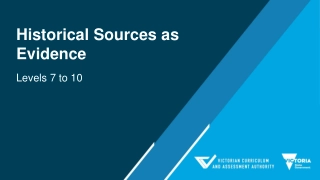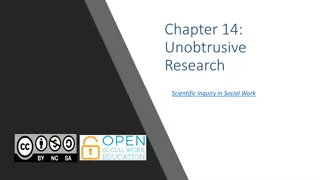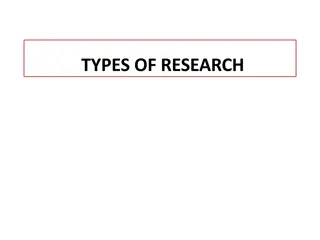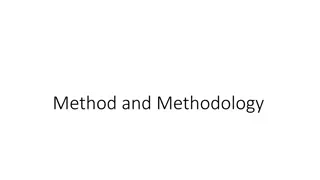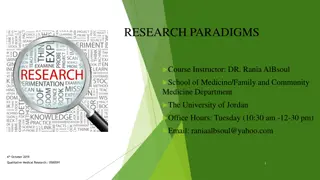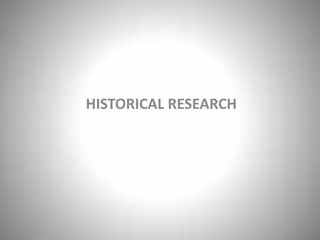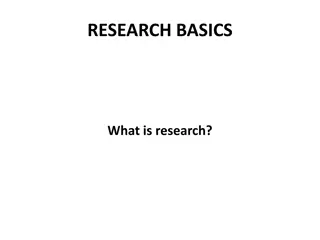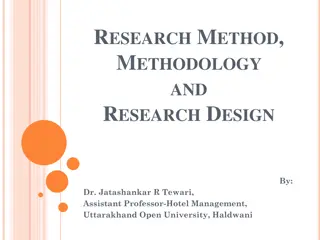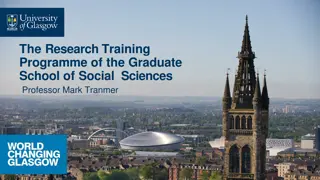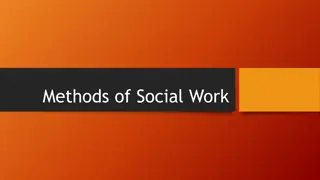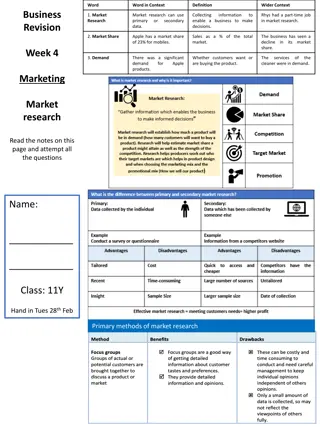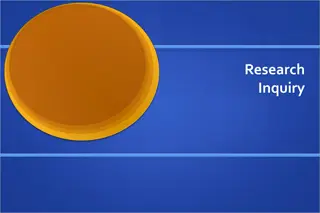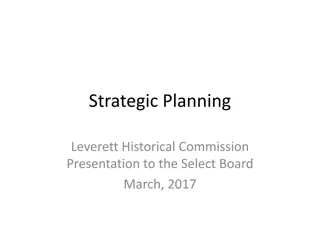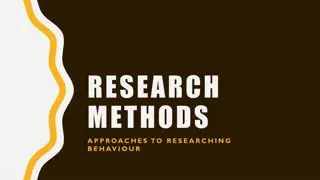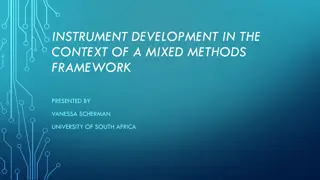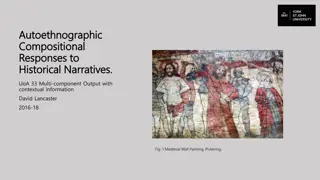Understanding Historical Research Methods
Historical research is a systematic approach to investigating past events, developments, and experiences. It involves critical examination of evidence, interpretation of sources, and tracing of historical trends to gain insights into social changes. Various definitions by scholars like Kerlinger, Whitney, Young, and Best highlight the importance of historical research in understanding past forces that have shaped the present.
Download Presentation

Please find below an Image/Link to download the presentation.
The content on the website is provided AS IS for your information and personal use only. It may not be sold, licensed, or shared on other websites without obtaining consent from the author. Download presentation by click this link. If you encounter any issues during the download, it is possible that the publisher has removed the file from their server.
E N D
Presentation Transcript
HISTORICAL RESEARCH METHOD
Research is the systematic approach towards purposeful investigation. Research as a word has got currency in modern times but it is very old in terms of practice. INTRODUCTION There is a history of continuous struggle between man and nature. History of man on earth is the history of knowledge and knowledge grows through research.
The method or technique used in conducting research operations is known as Research method. Research techniques are the tools of researcher. RESEARCH METHOD Research method leads to systematic and fruitful research. Research method makes a researcher strong and able to face new problems and challenges. Historical research is the research on past social forces which have shaped the present.
History is a list of chronological events which help to understand the present and to some extent, to predict the future. HISTORICAL RESEARCH METHOD Every social change is a result of past forces and history is the record of these changes. History is a truthful integrated account of relationships between persons , events, times and places. Historians generally draw their data from the observations and experiences of others, as they are not likely to have been at the scene of events.
HISTORICAL RESEARCH METHOD- DEFINITIONS 1. According to Kerlinger (F.N.), Historical research is the critical investigation of events, developments and experiences of the past, the careful weighing of the evidence of the validity of sources of information of the past, and the interpretation of the weighed evidence.
2. According to Whitney (F.L.),Historical research deals with past experiences. Its aim is to apply the method of reflective thinking to social problems, still unsolved, by means of discovery of past trends of event, fact and attitude.it traces lines of development in human thought and action in order to reach same basis for social activity. DEFINITIONS
3. According to Young (P.V.),Historical method is the induction of principles through research into the past social force and influences which have shaped the present. 4. According to Best (J.W.), Historical research is the application of the scientific method to historical problems. DEFINITIONS
Historical research describes what was. NEED & IMPORTANCE OF HISTORICAL RESEARCH It is important to gain a better understanding of the present state of affairs. It is a need to clarify the social, cultural and political events. Historical research helps to know about the original factors of a particular problem and its remedy.
Selection of a Problem and formulation of Hypothesis. Collection of Facts or Data STEPS OF HISTORICAL RESEARCH METHOD Classification and organisation of Data. Analysis and Description of Data.
Research always starts from a question or a problem, so selection of problem is the basic step. SELECTION OF PROBLEM AND FORMULATION OF HYPOTHESIS Every problem can not be analysed historically , so only that Problem should be selected whose historical perusal is possible. A good research problem has the qualities of significance, originality and feasibility.
The field of study selected should not be very broad and should be within resource limits. The problem selected should fulfil the social objectives. After evaluating the problem, hypothesis is to be formulated. SELECTION OF PROBLEM AND FORMULATION OF HYPOTHESIS Hypothesis must be consistent with known facts or theories. More than one hypothesis may be formulated. Hypothesis should be stated in simplest possible terms. Although, hypothesis are not explicitly stated in historical investigations, they are usually implied.
After formulation of hypothesis, the researcher starts collecting the facts or data from documentary sources. COLLECTION OF FACTS OR DATA Documentary sources may be primary or secondary. Primary sources are eyewitness accounts. They are reported by actual observer or participant in an event. They may include laws, Court decisions, diaries, census information, contracts, deeds, wills, permits , licenses, Affidavits, declarations, advertisements, maps, diagrams, recordings, transcriptions, research reports, etc.
Remains or relics are objects associated with a person, group or period. COLLECTION OF FACTS OR DATA Fossils, skeletons , tools, weapons, food, utensil , clothing, building, furniture, pictures, paintings, coins and art objectives are examples of those relics and remains, that were not deliberately intended for use in transmitting information or as records. However, these sources may provide clear evidence about the past. Oral testimony is the spoken account of a witness of, or participant in, an event. This event is obtained in a personal interview and may be recorded or Tran scripted as the witness relates his or her experience.
Secondary sources are based on or refer to primary sources. COLLECTION OF FACTS OR DATA Secondary sources are the reports of a person who relates the testimony of an actual witness of, or participant, in an event. The writer of the secondary source was not on the scene of the event but merely reports what the person who was there has said or written. These may include indexing and abstracting journals, encyclopaedias, subject bibliographies, critical evaluation,etc.
After data collection, next step is classification of data. On the basis of characteristics, like data are separated from unlike. CLASSIFICATION AND ORGANISATION OF DATA Through classification uniform data are brought together. Classification provides logical arrangement of data and make comparative studies possible. Proper classification of data leads to successful research. An ideal classification should be clear and unambiguous. Classification should be in accordance with the objectives of research.
Geographical Classification. Periodical Classification. TYPES OF CLASSIFICATION Qualitative Classification. Conditional Classification. Classification on the basis of values.
After classification, the next step is analysis of data. Objectives cannot be fulfilled without analysis of data. ANALYSIS AND DESCRIPTION OF DATA Authenticity of data can be proved through proper analysis. Important data should be selected from the collected data and their comparative study should be made. Comparison helps in depth and detailed study. Data analysis either brings confirmation to old assumptions or it proves them invalid.
After analysis of collected facts, the conclusion is obtained. This process is called description of data. ANALYSIS AND DESCRIPTION OF DATA During this process, researcher tries to clarify the cause and effect relationship. Objective analysis and description is the basis of scientific study. It is very difficult to maintain objectivity in Historical method, because researcher has to depend on other sources ,believes and points of views.
Historical method id a method of studying chronological development of events, facts or attitudes from past. In this method efforts are made to solve the present problems of the society on the basis of past events. CONCLUSION Historical method is useful in the field of History, linguistics and literature but, it can be applied to trace the historical development of any branch of knowledge. Historical method is in real sense, the subjective search, which helps only in reaching near the authenticity.


